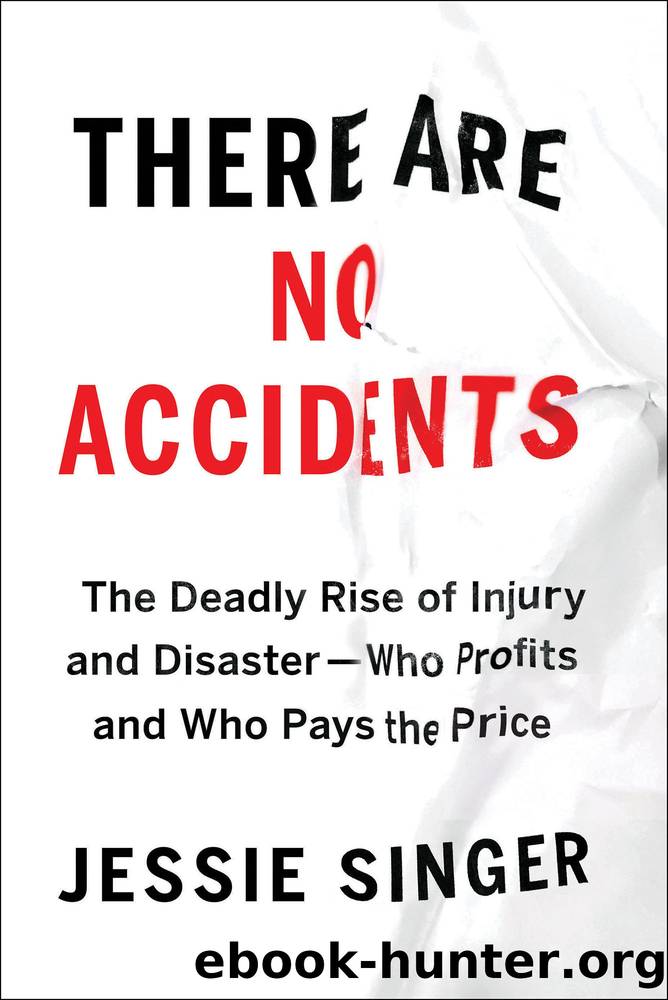There Are No Accidents by Jessie Singer

Author:Jessie Singer
Language: eng
Format: epub
Publisher: Simon & Schuster
Published: 2022-02-15T00:00:00+00:00
How to Prevent an Accident
After World War II, an Air Force captain named Richard Jones and an Air Force psychologist named Paul Fitts made a groundbreaking connection between human error and dangerous conditions. Wanting to understand how deadly mistakes occurred among trained pilots, Fitts and Jones collected 460 accounts in which pilots described their own mistakes in the cockpit during the war. Among the accounts, Fitts and Jones immediately found patterns. Mistakes repeated across pilots, scenarios, and cockpit models. In the accounts, they identified six types of errors, repeated again and again. And remarkably, each of these error types could be chalked up to the airplanesâ design. The two men published their findings in 1947ââAnalysis of Factors Contributing to 460 âPilot Errorâ Experiences in Operating Aircraft Controls.â
Fitts and Jones put âpilot errorâ in scare quotes with good reason. They found that most accidents that were blamed on pilot error could actually be attributed to the design of airplane controls. The plane itself was a dangerous condition. Airplane manufacturers had designed instruments for very different functions that were identical in appearance, and had located crucial buttons and levers in different places on different models of planes. To name one common example, pilots kept confusing the flaps and gear leversâand they did this because the flaps and gear levers looked the same, felt the same, and were not located in a standard place or order: sometimes flaps on the left, sometimes flaps on the right. One of these devices changed the aircraftâs lift and drag, and it was the same size and shape as, and right next to, one that released the landing gear. It was under these conditions that pilots flying through war zones sometimes dropped the landing gear when they meant to increase the ascent of the plane.
In isolation, before Fitts and Jones, each of these instances looked like individual human errors, one pilot accidentally pulling one incorrect lever. But taken together, the mistakes revealed a pattern of obvious, predictable, and highly preventable outcomes caused by the planesâ design. When Fitts and Jones put aside âpilot error,â they could see the dangerous conditions built into the cockpit. âIt should be possible,â they wrote, âto eliminate a large proportion of aircraft accidents by designing instruments in accordance with human requirements.â
This was a brand-new idea. Building for human requirements would come to be known as âhuman factors engineeringââobserving how brains and bodies work and then building environments to match.
The most groundbreaking part of Fitts and Jonesâs study was this: Instead of ending their investigation by blaming the pilot, they used blame as the notification to begin their investigation. They concluded that pilot error is almost always a consequence of some flaw in the built environment.
Even so, blaming human error remains the industry norm today. It is as tempting to the experts as it is to all of usâeven among plane accident investigators. To prove the pervasiveness of blame for human error even among these professionals, a human factors engineer and cognitive psychologist
Download
This site does not store any files on its server. We only index and link to content provided by other sites. Please contact the content providers to delete copyright contents if any and email us, we'll remove relevant links or contents immediately.
Cecilia; Or, Memoirs of an Heiress — Volume 1 by Fanny Burney(32023)
Cecilia; Or, Memoirs of an Heiress — Volume 3 by Fanny Burney(31436)
Cecilia; Or, Memoirs of an Heiress — Volume 2 by Fanny Burney(31380)
The Great Music City by Andrea Baker(30641)
We're Going to Need More Wine by Gabrielle Union(18607)
All the Missing Girls by Megan Miranda(14600)
Pimp by Iceberg Slim(13718)
Bombshells: Glamour Girls of a Lifetime by Sullivan Steve(13666)
Fifty Shades Freed by E L James(12886)
Talking to Strangers by Malcolm Gladwell(12815)
Norse Mythology by Gaiman Neil(12789)
For the Love of Europe by Rick Steves(11332)
Crazy Rich Asians by Kevin Kwan(8861)
Mindhunter: Inside the FBI's Elite Serial Crime Unit by John E. Douglas & Mark Olshaker(8665)
The Lost Art of Listening by Michael P. Nichols(7125)
Enlightenment Now: The Case for Reason, Science, Humanism, and Progress by Steven Pinker(6852)
The Four Agreements by Don Miguel Ruiz(6284)
Bad Blood by John Carreyrou(6255)
Weapons of Math Destruction by Cathy O'Neil(5801)
